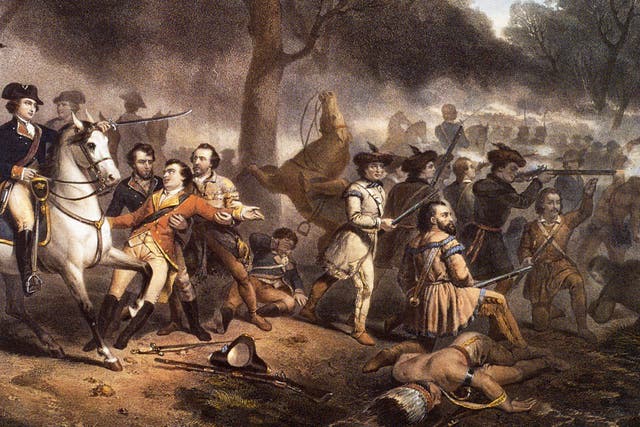

The Proclamation of 1763, issued by the British crown at the end of the French and Indian War, set territorial limits on where European colonists could settle in America. Designed to appease Native Americans, who had occupied the land for millennia, it created a boundary—known as the "proclamation line"—beyond which Europeans could not encroach onto Indigenous lands. According to the Proclamation, British colonists could settle anywhere between the Atlantic coast and the Appalachian Mountains, while any land west of that belonged to Indian nations. In the centuries since the proclamation, it has become one of the cornerstones of Native American law in the United States and Canada.
Proclamation of 1763After the conclusion of the French and Indian War in America, the British Empire began to tighten control over its rather autonomous colonies. In response to Pontiac’s Rebellion, a revolt of Native Americans led by Pontiac, an Ottawa chief, King George III declared all lands west of the Appalachian Divide off-limits to colonial settlers.
This royal proclamation, issued on October 7, 1763, closed down colonial expansion westward beyond Appalachia. It was the first measure to affect all thirteen colonies. The edict forbade private citizens and colonial governments alike from buying land or making any agreements with natives; the empire would conduct all official relations. Furthermore, only licensed traders would be allowed to travel west or deal with Indians. Theoretically protecting colonists from Indian rampages, the measure was also intended to shield Native Americans from increasingly frequent attacks by white settlers. The proclamation also established three new mainland colonies: Quebec, West Florida and East Florida, while extending Georgia’s southern border and granting land to soldiers who had fought in the Seven Year's War.
It's been overshadowed by other events, but King George III’s decree—which banned colonial settlement west of the Appalachians—was the first in a series of British actions that led to the American Revolution.
A proclamation by King George III set the stage for Native American rights—and the eventual loss of most tribal lands.
10 surprising facts about the imperial war for colonial domination between Great Britain and France.
Although the proclamation was introduced as a temporary measure, its economic benefits for Britain prompted ministers to keep it until the eve of the Revolutionary War. A desire for good farmland caused many colonists to defy the proclamation; others merely resented the royal restrictions on trade and migration. Ultimately, the Proclamation of 1763 failed to stem the tide of westward expansion.
Stream American Revolution documentaries and your favorite HISTORY series, commercial-free.